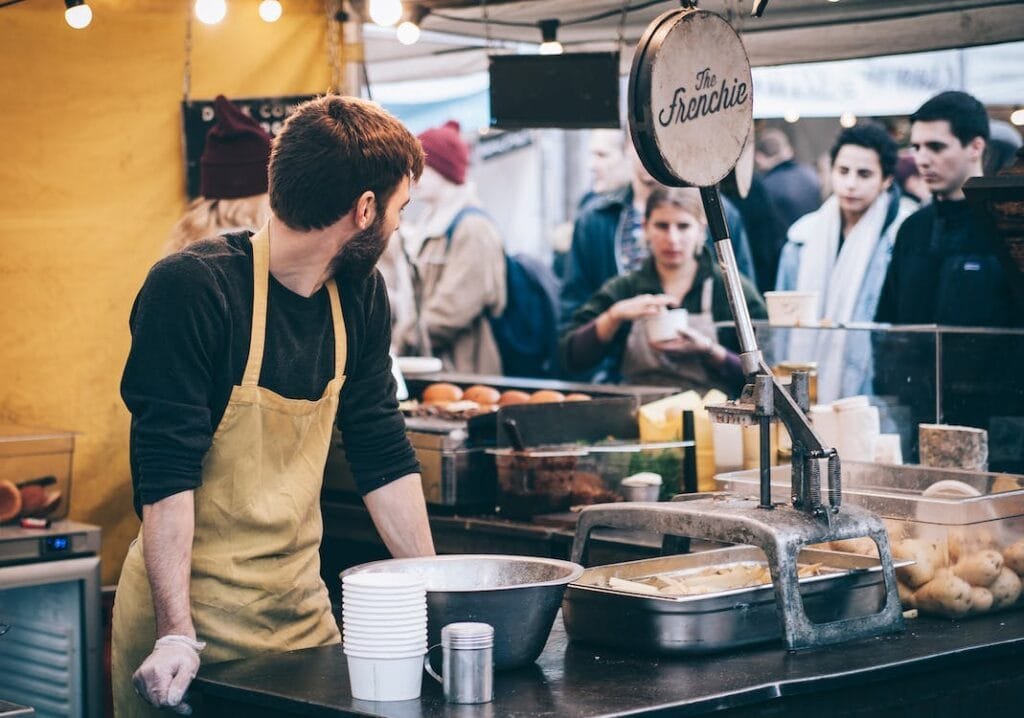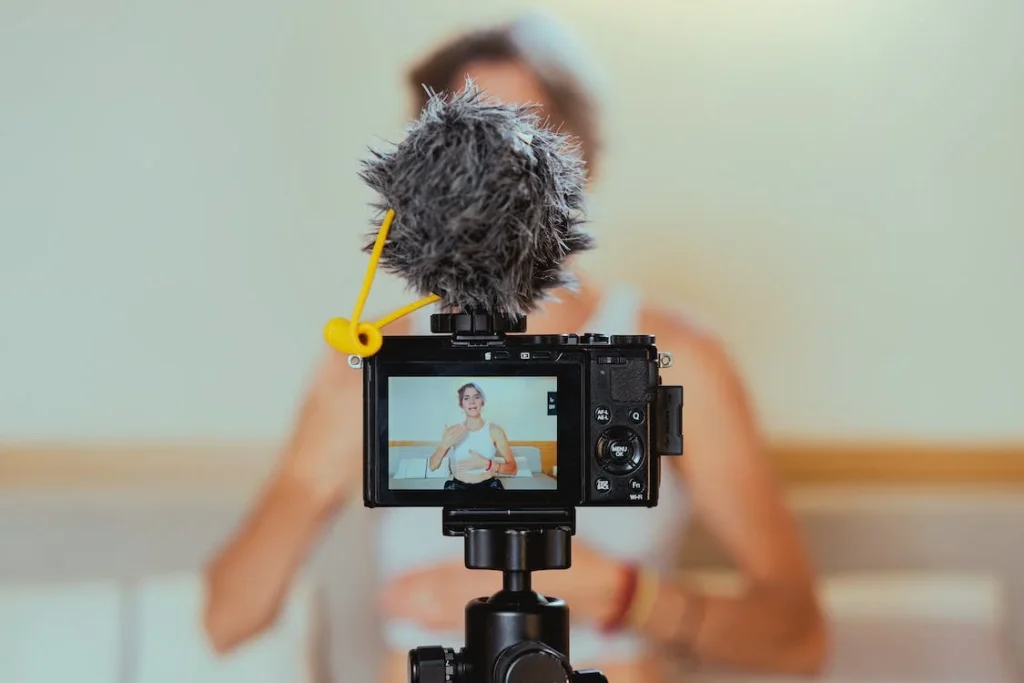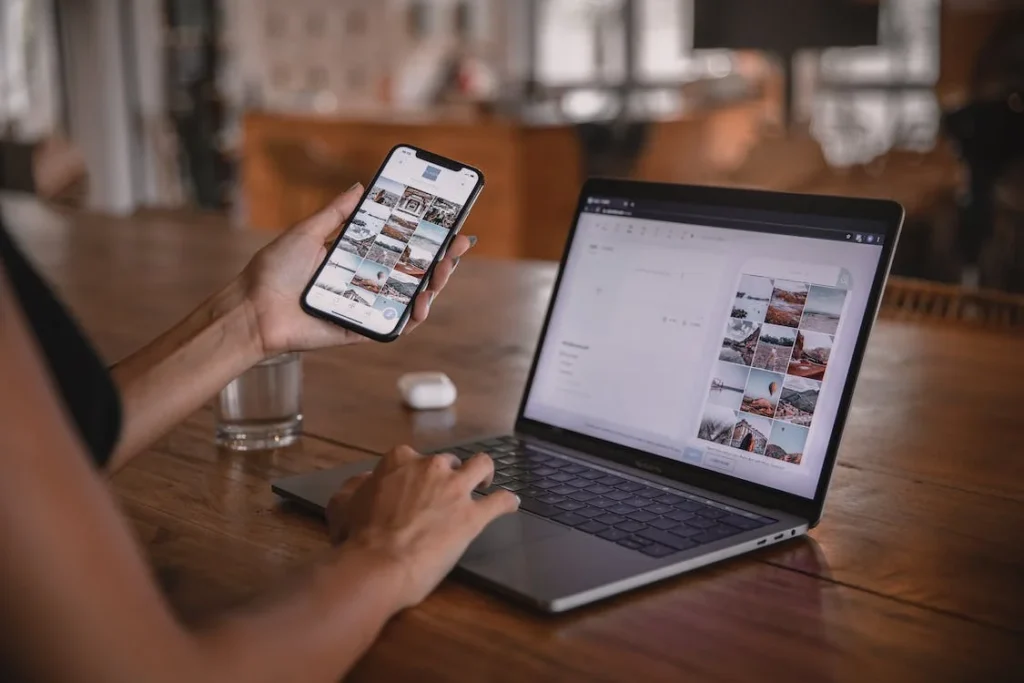This Article has been revised, edited and added to, by Poulomi Chakraborty.
- The Flavorful Fusion of Food and Social Media
- Whetting the Appetite: Why Influencers?
- Understanding the Digital Dining Experience
- Crafting Visual Storytelling
- Leveraging the Power of Authenticity
- Engaging with Interactive Content
- Harnessing the Reach of Multiplatform Strategies
- Strategic Use of Hashtags and Trends
- Creating a Seamless Brand Experience
- Analyzing and Optimizing Performance
- Savoring the Benefits of Strategic Influencer Collaboration
- The Main Course: Building an Influencer Marketing Strategy
- Identifying the Right Influencers
- Crafting the Partnership
- Measuring Success
- Keeping the Engagement Tasty and Fresh
- Defining Clear Objectives and KPIs
- Conducting Thorough Market Research
- Identifying and Vetting Potential Influencers
- Developing a Compelling Value Proposition
- Crafting Tailored Campaigns
- Establishing Clear Communication Channels
- Leveraging Data-Driven Insights
- Fostering Long-Term Relationships
- Integrating Influencer Marketing with Overall Brand Strategy
- Evaluating and Iterating on Your Strategy
- Mastering the Art of Influencer Marketing
- The Side Dishes: Expanding Your Influencer Efforts
- Leveraging User-Generated Content
- Cross-Promoting for a Full Meal Deal
- Keeping Your Content Menu Diverse
- Seasonal Campaigns for Year-Round Relevance
- Enhancing Reach through Micro-Influencers
- Amplifying Content through Influencer Networks
- Engaging with Influencers in Emerging Platforms
- Utilizing Influencer-Led Product Development
- Co-Creating Branded Content
- Leveraging User-Generated Content (UGC)
- Implementing Seasonal and Themed Campaigns
- Building a Community through Influencer Engagement
- Tracking Performance and Iterating Strategies
- Maximizing the Impact of Expanded Influencer Efforts
- Savoring the Journey in Influencer Marketing
- Conclusion
Welcome, foodpreneurs and beverage innovators! In the digital age, where the appetite for stunning food visuals and delectable stories is ever-growing, tapping into the power of influencer marketing is like finding that secret sauce that can make your brand sizzle. It’s all about the collaboration between brands and those who hold sway over the gastronomic desires of the masses – the food bloggers and chefs who have become today’s culinary celebrities.
But before we dive into the succulent world of influencer marketing strategies tailored for the food and beverage industry, let’s chew on this: Why should you even bother? Well, imagine your product being showcased in an Instagram story by a popular chef, or your new beverage being the talk of the town after a food blogger’s tweet goes viral. That’s the magic of influencer marketing, served fresh and hot.
This comprehensive guide is cooked up to help you harness that magic. Whether you’re launching a new line of organic snacks or promoting a craft beer, this article is your recipe for success. So, let’s get started on this culinary journey to make your brand the toast of the food and beverage scene.
The Flavorful Fusion of Food and Social Media

In a world where social media platforms are like bustling food markets, influencers are the vendors who know how to attract a crowd. They’ve mastered the art of engaging storytelling, high-quality content creation, and have cultivated a loyal following that trusts their recommendations. When a food influencer shares a post about a mouth-watering dish or a refreshing drink, it isn’t just a casual mention—it’s a taste test experienced vicariously by thousands, sometimes millions, of followers.
Now, isn’t that a table you’d want a seat at? As we explore the nitty-gritty of building these partnerships, remember, your goal is to create a symphony of shared values, interests, and visions that resonate with both the influencer’s audience and your target customers.
Whetting the Appetite: Why Influencers?
So why influencers in the food and beverage space? Because they add that personal touch. They transform a simple meal into a narrative about culture, health, indulgence, or even comfort. This narrative is what sells, not the product alone. It’s the experience around the food and the person who introduces it to you.
As we garnish our strategy with tips and real-life examples, keep in mind that the best partnerships are like a perfect pairing of wine and cheese – complementary and enhancing each other’s best qualities.
Understanding the Digital Dining Experience
In today’s digital landscape, the way consumers discover, interact with, and develop loyalty towards food and beverage brands has fundamentally shifted. Social media platforms have become virtual dining tables where food enthusiasts gather to share experiences, seek recommendations, and explore new culinary delights.
For startup founders in the food and beverage industry, understanding this digital dining experience is crucial. It’s about more than just having an online presence; it’s about creating an engaging, immersive experience that draws people in and makes them part of your brand’s story.
Crafting Visual Storytelling
Visual appeal is paramount in the food and beverage sector. High-quality, mouth-watering visuals are essential to capturing the attention of potential customers. Influencers, particularly food bloggers and chefs, have mastered the art of visual storytelling.
Collaborating with them allows you to showcase your products in a way that is both appetizing and engaging. Encourage influencers to create visually stunning content that highlights the unique aspects of your products, from the rich textures and vibrant colors to the intricate details that set your offerings apart.
This visual storytelling can evoke emotions and cravings, driving viewers to seek out and try your products.
Leveraging the Power of Authenticity
In the realm of food and beverage, authenticity is a key ingredient for success. Consumers are drawn to influencers who are genuine and transparent, sharing their real experiences and honest opinions.
When an influencer authentically enjoys and endorses your product, it builds trust and credibility among their followers. As a startup, it’s vital to choose influencers who genuinely align with your brand values and ethos.
This alignment ensures that their endorsements feel natural and believable, rather than forced or purely transactional. Authentic collaborations can transform your product from a mere item on the shelf into a must-have culinary experience.
Engaging with Interactive Content
Interactive content is a powerful tool for driving engagement and fostering a sense of community around your brand. Food bloggers and chefs often create interactive content such as cooking tutorials, live Q&A sessions, and recipe challenges that invite their audience to participate actively.
Partnering with influencers to create such interactive experiences can significantly boost engagement and brand loyalty. For example, a live cooking session where an influencer uses your product can create real-time excitement and allow potential customers to ask questions and interact directly with the influencer.
These interactive moments can deepen the connection between your brand and the audience.
Harnessing the Reach of Multiplatform Strategies
Different social media platforms offer unique opportunities and cater to diverse audiences. A successful influencer marketing strategy should leverage a multiplatform approach to maximize reach and impact. Instagram, with its focus on visuals, is perfect for showcasing stunning food photography and quick recipe videos.
YouTube allows for more in-depth content like cooking tutorials and product reviews. TikTok’s short-form, engaging videos can quickly go viral, making it ideal for trends and challenges.
Facebook groups and forums can facilitate community building and detailed discussions. By working with influencers to create content tailored for each platform, you can reach a wider audience and create a cohesive brand presence across the digital landscape.
Strategic Use of Hashtags and Trends
Hashtags and trends play a significant role in increasing the visibility of your content on social media. Influencers are adept at using relevant hashtags and tapping into current trends to amplify their reach. As a startup, collaborate with influencers to identify and utilize the most effective hashtags related to your niche.
Additionally, aligning your campaigns with popular food trends can create a buzz and attract attention. Whether it’s a seasonal trend like pumpkin spice in autumn or a health trend like plant-based diets, positioning your product within these trends can make it more appealing to a broader audience.
Creating a Seamless Brand Experience
Consistency is key in creating a seamless brand experience across all touchpoints. When collaborating with multiple influencers, ensure that there is a coherent narrative and visual style that reflects your brand identity.
Provide influencers with clear brand guidelines and key messages to maintain consistency while allowing them the creative freedom to express their unique voice. This approach ensures that every piece of content, regardless of the platform or influencer, contributes to a unified brand story.
A seamless brand experience builds recognition and reinforces your brand’s image in the minds of consumers.
Analyzing and Optimizing Performance
Finally, continuously analyzing and optimizing your influencer marketing efforts is essential for long-term success. Track the performance of each campaign using metrics such as engagement rates, reach, conversions, and return on investment.
Use this data to identify what works best and refine your strategies accordingly. Encourage influencers to provide feedback on audience reactions and insights from their perspective.
This collaborative approach to performance analysis ensures that you can adapt and improve your campaigns, making them more effective and aligned with your business goals.
Savoring the Benefits of Strategic Influencer Collaboration
The fusion of food and social media offers a unique opportunity for startups to build a compelling brand presence and connect with consumers on a personal level.
By understanding the digital dining experience, crafting visually appealing and authentic content, engaging with interactive experiences, leveraging multiplatform strategies, strategically using hashtags and trends, creating a seamless brand experience, and continuously analyzing performance, startup founders can harness the full potential of influencer marketing.
This strategic approach not only drives immediate results but also builds lasting relationships and brand loyalty, ensuring your startup thrives in the competitive food and beverage industry.
The Main Course: Building an Influencer Marketing Strategy

Embarking on an influencer marketing journey requires more than just a love for good food and drink; it demands a strategy as meticulously crafted as a Michelin-starred menu. So, let’s set the table for success.
Identifying the Right Influencers
First things first: finding the right influencer is like sourcing the finest ingredients for your signature dish. They need to resonate with your brand ethos, audience, and goals.
Begin by scoping out food bloggers and chefs whose content aligns with your brand’s identity. An organic juice brand might partner with a vegan food blogger, while a gourmet cheese company might look to a chef known for their decadent cheese plates.
A huge following can be impressive, but what you want is an influencer whose audience is engaged—likes, comments, shares, and saves are your secret spices here.
Crafting the Partnership
Once you’ve identified a potential influencer, it’s time to cook up a partnership that benefits both parties. A personalized approach is key. Tailor your outreach by showing genuine interest in their work and clearly explaining why a partnership could be mutually beneficial.
Work with influencers to create campaigns that feel organic to their style. It could be a cooking challenge, a recipe series, or a live-tasting event—creativity here will set you apart.
Ensure your influencers have the creative freedom to showcase your products in a way that feels true to their brand, while also being clear about your marketing objectives.
Measuring Success
The proof is in the pudding, or in this case, the metrics. Keep track of reach, engagement, conversion rates, and sales attributed to the influencer’s content to measure the impact of your partnership.
Define what success looks like before the campaign starts. Is it brand awareness measured by impressions, or is it sales measured by a promo code used by the influencer’s followers? Leverage analytics tools provided by social media platforms, or invest in third-party tools to get deeper insights into campaign performance.

Related: Check out our free SEO suite

Keeping the Engagement Tasty and Fresh
Influencer marketing is not a one-time deal—it’s about nurturing a relationship. Engage with the influencer’s content, respond to comments, and stay active in the conversation around your brand.
As with any good menu, variety is key. Work with influencers on different types of content across various platforms to keep things interesting. Listen to the influencer and their audience’s feedback about your product. This can be a goldmine for product development and improvement.
Defining Clear Objectives and KPIs
The foundation of a successful influencer marketing strategy begins with defining clear objectives and key performance indicators (KPIs). Startup founders must align these objectives with their broader business goals.
Whether the aim is to increase brand awareness, drive website traffic, boost sales, or enhance customer loyalty, having well-defined goals ensures that every aspect of the campaign is purpose-driven.
KPIs such as engagement rates, reach, conversion rates, and return on investment (ROI) should be established from the outset to measure success and guide future efforts.
Conducting Thorough Market Research
Understanding the market landscape is critical for identifying opportunities and positioning your brand effectively. Conduct comprehensive market research to gain insights into consumer behavior, preferences, and trends within the food and beverage industry.
This research should include competitor analysis to understand their influencer marketing strategies, strengths, and weaknesses. By identifying gaps in the market and areas where your brand can stand out, you can tailor your influencer marketing strategy to address these opportunities and differentiate your offerings.
Identifying and Vetting Potential Influencers
Selecting the right influencers involves more than just looking at follower counts. It’s essential to identify influencers whose values, audience demographics, and content style align with your brand. Use tools and platforms designed for influencer discovery to find potential partners.
Once identified, vet these influencers thoroughly by analyzing their engagement rates, the authenticity of their interactions, and the performance of their previous collaborations. This due diligence ensures that you partner with influencers who can genuinely connect with your target audience and effectively promote your brand.
Developing a Compelling Value Proposition
To attract top-tier influencers, it’s crucial to develop a compelling value proposition that highlights the mutual benefits of the partnership. Clearly articulate how collaborating with your brand will add value to the influencer’s content and resonate with their audience.
This might include exclusive product access, financial compensation, co-branded content opportunities, or unique experiences. A strong value proposition not only attracts influencers but also motivates them to create high-quality, authentic content that aligns with your marketing objectives.
Crafting Tailored Campaigns
Each influencer brings their unique style and audience preferences to the table. Craft tailored campaigns that leverage these unique strengths while aligning with your brand’s messaging. Collaborative brainstorming sessions with influencers can lead to innovative campaign ideas that feel organic and engaging.
Whether it’s a cooking challenge, a recipe development series, or a behind-the-scenes look at product creation, ensure that the content is authentic and resonates with both the influencer’s followers and your target market. Tailored campaigns enhance authenticity and increase the likelihood of achieving your marketing goals.
Establishing Clear Communication Channels
Effective communication is the backbone of any successful influencer partnership. Establish clear and consistent communication channels from the beginning to ensure that expectations are aligned, and any potential issues can be addressed promptly.
Regular check-ins and updates help maintain momentum and foster a collaborative relationship. Providing influencers with detailed briefs and brand guidelines, while also allowing creative freedom, ensures that the content remains true to your brand while showcasing the influencer’s unique voice.
Leveraging Data-Driven Insights
Data-driven decision-making is critical for optimizing influencer marketing campaigns. Utilize analytics tools to track the performance of influencer content across various metrics, including engagement, reach, website traffic, and conversions.
Analyze this data to identify trends, understand what resonates with the audience, and make informed adjustments to your strategy. A/B testing different approaches can provide valuable insights into what works best, allowing for continuous improvement and refinement of your campaigns.
Fostering Long-Term Relationships
Building long-term relationships with influencers can lead to more authentic and effective collaborations. Long-term partnerships allow influencers to become deeply familiar with your brand, leading to more genuine endorsements and consistent messaging.
This ongoing relationship can result in influencers becoming true advocates for your brand, providing sustained engagement and loyalty from their audience. Consider offering incentives for long-term collaboration, such as tiered compensation, exclusive opportunities, or shared campaign milestones.
Integrating Influencer Marketing with Overall Brand Strategy
Influencer marketing should not exist in a vacuum but rather be integrated with your overall brand strategy. Ensure that influencer campaigns complement and enhance your other marketing efforts, such as social media marketing, content marketing, and PR activities.
This integration creates a cohesive brand narrative and maximizes the impact of your marketing initiatives. Coordinate with your internal teams to align messaging, timing, and promotional activities, ensuring a unified approach across all channels.
Evaluating and Iterating on Your Strategy
Continuous evaluation and iteration are key to long-term success in influencer marketing. After each campaign, conduct a thorough analysis of the results, comparing performance against your established KPIs. Gather feedback from influencers and their audiences to gain qualitative insights.
Use this information to identify strengths, address weaknesses, and refine your strategy for future campaigns. An iterative approach ensures that your influencer marketing remains dynamic, effective, and aligned with your evolving business goals.
Mastering the Art of Influencer Marketing
Building a successful influencer marketing strategy requires a blend of clear objectives, thorough research, strategic planning, and continuous optimization.
By defining your goals, identifying the right influencers, crafting tailored campaigns, leveraging data-driven insights, fostering long-term relationships, and integrating influencer marketing with your overall brand strategy, startup founders can create impactful and sustainable influencer campaigns.
This comprehensive approach ensures that your brand not only gains visibility and engagement but also builds lasting connections with consumers in the competitive food and beverage industry.
The Side Dishes: Expanding Your Influencer Efforts

No meal is complete without the right accompaniments. Similarly, your influencer marketing strategy needs several supporting tactics to fully realize its potential. Let’s explore how to complement and amplify your influencer collaborations.
Leveraging User-Generated Content
When influencers create content for your brand, it often inspires their followers to do the same. This user-generated content (UGC) is a treasure trove that can amplify your reach and authenticity.
Incentivize the influencer’s audience to share their own experiences with your products. It could be through a contest or a simple call-to-action. Show appreciation by featuring UGC on your own channels. This not only provides you with authentic content but also strengthens your community.
Cross-Promoting for a Full Meal Deal
Cross-promotion is like a well-orchestrated potluck; each participant brings something to the table, increasing variety and reach. Look for non-competing brands in the food and beverage industry with whom you can collaborate. This can open up your brand to an entirely new audience.
Work with these brands and influencers to create content that highlights both offerings. This could be a special recipe or a themed event.
Keeping Your Content Menu Diverse
Don’t just stick to one type of content or social media platform. Combine blog posts, videos, live streams, and more to cater to different preferences in your audience. Different platforms serve different purposes. Instagram might be great for visuals, while Twitter could be better for quick, witty engagement about your brand.
Your influencer’s followers are your potential customers, and engaging with them can convert interest into sales. Be active in the comments section of the influencer’s posts about your brand, and engage in a way that adds value and builds relationships.
Give the influencer’s audience a reason to engage directly with your brand, such as offering them exclusive discounts or early access to new products.
Seasonal Campaigns for Year-Round Relevance
Just like food, influencer marketing can be seasonal. Plan campaigns around holidays, seasons, or food-related events. Is pumpkin spice everything in the fall? Or is the summer all about grilling? Create influencer campaigns that tap into these seasonal trends.
From National Pizza Day to World Chocolate Day, use these as opportunities to engage with influencers and create campaigns. Like any good chef, you must taste and adjust as you go. Use the data from your campaigns to refine your approach.
Look at what’s working and what’s not. Maybe short-form videos on TikTok are generating more buzz than long-form content on YouTube. Food trends change quickly, and so do social media trends. Keep your finger on the pulse to ensure your influencer marketing strategies remain effective and engaging.
Every element of your influencer marketing strategy should work in harmony, like ingredients in a well-balanced dish. By paying attention to the details and complementing your main influencer campaigns with these additional tactics, you’ll ensure that your brand remains top-of-mind for consumers.
Enhancing Reach through Micro-Influencers
While partnering with well-known influencers can yield significant visibility, integrating micro-influencers into your strategy can provide a more nuanced and highly engaged reach. Micro-influencers, with their smaller but dedicated followings, often have higher engagement rates and more intimate connections with their audience.
For startups, leveraging micro-influencers can be a cost-effective way to build authentic relationships with potential customers. Collaborate with several micro-influencers who align with your brand values and target demographics to create a diverse and widespread impact.
Amplifying Content through Influencer Networks
Expanding your influencer efforts involves tapping into the networks and communities that influencers belong to. Many influencers are part of larger networks or have strong connections with other influencers in their niche.
Encourage your primary influencers to share your campaign with their peers, leading to a ripple effect that can amplify your brand’s reach. This network effect can introduce your brand to new audiences, increasing visibility and engagement without the need for additional partnerships.
Engaging with Influencers in Emerging Platforms
Social media landscapes are continually evolving, with new platforms gaining popularity and changing how audiences consume content. Staying ahead of these trends is crucial for maintaining a competitive edge.
Identify emerging platforms that are gaining traction, especially among your target demographic, and collaborate with influencers who are early adopters of these platforms. This proactive approach allows you to reach audiences in innovative ways, capturing their attention before the platform becomes saturated with competitors.
Utilizing Influencer-Led Product Development
Influencers are not only valuable for promoting your products but can also play a pivotal role in product development. Their firsthand interactions with your target audience make them a valuable source of feedback and innovation. Involve influencers in the product development process by seeking their insights and ideas.
This collaboration can lead to the creation of products that better meet consumer needs and preferences, ensuring a stronger market fit. Additionally, influencers who have contributed to product development are likely to be more enthusiastic and authentic in their promotions.
Co-Creating Branded Content
Co-creating branded content with influencers can significantly enhance the authenticity and appeal of your campaigns. Instead of simply asking influencers to promote your products, work together to develop content that feels organic and resonates with their audience.
This could include cooking shows, behind-the-scenes videos, or storytelling series that integrate your brand seamlessly into the influencer’s narrative. Co-created content leverages the influencer’s creativity and connection with their audience, resulting in more engaging and impactful promotions.
Leveraging User-Generated Content (UGC)

User-generated content (UGC) can serve as a powerful complement to your influencer marketing efforts. Encourage influencers to inspire their followers to create and share content featuring your products. This could be through contests, challenges, or themed campaigns that motivate audience participation.
Featuring UGC on your own social media channels not only provides authentic content but also fosters a sense of community and involvement around your brand. It also extends the reach of your campaign as followers share their creations within their own networks.
Implementing Seasonal and Themed Campaigns
Seasonal and themed campaigns can add a layer of relevance and excitement to your influencer marketing strategy. Align your campaigns with holidays, seasonal trends, or special events to capture the audience’s interest when they are most receptive.
For instance, a summer beverage campaign featuring influencers enjoying your drink at outdoor gatherings can evoke a sense of enjoyment and refreshment. Plan your influencer collaborations around these themes to create timely and compelling content that resonates with consumers’ seasonal preferences.
Building a Community through Influencer Engagement
Influencer marketing should not be a one-off tactic but part of a broader strategy to build a loyal community. Engage continuously with the followers gained through influencer campaigns by creating a welcoming and interactive brand environment.
Respond to comments, share user-generated content, and maintain a consistent presence on social media. Consider developing exclusive communities, such as Facebook groups or brand ambassador programs, where influencers and their followers can interact directly with your brand.
This ongoing engagement fosters a deeper connection and cultivates brand advocates.
Tracking Performance and Iterating Strategies
To ensure the effectiveness of your expanded influencer efforts, it is essential to track performance rigorously and iterate strategies based on insights gained. Utilize advanced analytics tools to monitor the impact of your campaigns across various metrics, including engagement, reach, conversions, and ROI.
Regularly review these metrics to identify what is working and what needs adjustment. Use A/B testing to experiment with different approaches and optimize your strategies for better outcomes. Continuous analysis and iteration will keep your influencer marketing efforts dynamic and responsive to changing market conditions.
Maximizing the Impact of Expanded Influencer Efforts
Expanding your influencer efforts beyond traditional collaborations can unlock new opportunities for growth and engagement.
By integrating micro-influencers, leveraging influencer networks, exploring emerging platforms, involving influencers in product development, co-creating content, encouraging UGC, implementing seasonal campaigns, building a community, and continuously tracking performance, startup founders can create a robust and dynamic influencer marketing strategy.
This comprehensive approach ensures that your brand remains relevant, engaging, and poised for long-term success in the competitive food and beverage industry.
Savoring the Journey in Influencer Marketing

As we reach the end of our gastronomic journey through the world of influencer marketing for the food and beverage industry, it’s time to digest the feast of information we’ve shared. Let’s recap the essential ingredients that will help you whip up a successful influencer marketing strategy.
The Essential Ingredients for Success
Select influencers who align with your brand’s values and voice. They should be relatable to your target audience and have an engaged following, not just a large one. Build authentic partnerships with influencers. Trust them as you would trust a sous-chef in your kitchen – give them the freedom to be creative with your brand.
Collaborate on content that tells a story, one that weaves your product into the daily lives of consumers. Whether it’s through a recipe, a lifestyle post, or an engaging video, make sure it resonates with the audience. Don’t just sit back once the influencer posts the content. Engage with the audience, encourage user-generated content, and use the momentum to amplify your brand’s message.
Track the right metrics to measure the effectiveness of your campaigns. Use these insights to optimize future collaborations and strategies.
Conclusion
As with any fine dining experience, the end of the meal is just the beginning of your relationship with the chef. Similarly, the conclusion of an influencer campaign is the start of an ongoing relationship with both the influencer and their audience. Nourish these relationships, and they will undoubtedly pay dividends in brand loyalty and growth.
Influencer marketing in the food and beverage industry is more than just a promotional tactic; it’s an opportunity to connect with consumers on a personal level, to share a meal, albeit virtually, and to become a part of their lives. Use this opportunity wisely, and your brand could become the next best thing since sliced bread in the foodie world.
And with that, our culinary tour comes to an end. We hope you’ve gathered the ingredients you need to cook up your own influencer marketing success story. Go forth and create campaigns that are as deliciously satisfying as your products. Bon voyage on your influencer marketing journey!
Read Next
- The Role of Webinars and Live Events in Affiliate Marketing Success
- Affiliate Marketing for the Food and Beverage Industry: Promoting Culinary Delights
- The Power of Influencer Partnerships in Affiliate Marketing
- Affiliate Marketing for the Education Sector: Promoting Courses and Learning Tools
- Affiliate Marketing for Local Businesses: Building Loyalty and Earning Commissions






















Comments are closed.